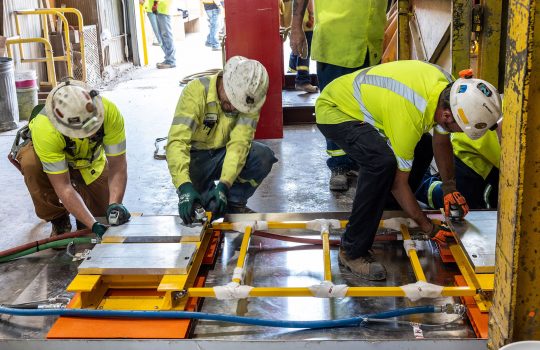In 2015, 700 scientists from around the world came together and established a collaboration on neutrino research that has grown to include more than 1,000 scientists from over 30 countries. And Spain was involved from the beginning.
“It was an exciting time,” said Inés Gil-Botella, member of Fermilab’s Physics Advisory Committee and senior scientist at Spain’s Center for Energy, Environment and Technology Research (CIEMAT). “It was a huge step toward a neutrino-based partnership between Fermilab and Spain, and the rest of the world.”
The early collaboration meetings set the stage for what would quickly become the Deep Underground Neutrino Experiment, a name Gil-Botella remembers the early collaboration voting on. Already involved in the development of similar technology at the European laboratory CERN, Spanish institutions brought technical expertise of photon detectors and liquid-argon cryostats to the collaboration.
“Spanish scientists and institutions have a long history of working with Fermilab and have made countless important contributions over the years,” said Fermilab Director Nigel Lockyer. “Projects such as the development of the photon detection system are critical to the success of DUNE, and we benefit from the expertise of our colleagues from Spain.”
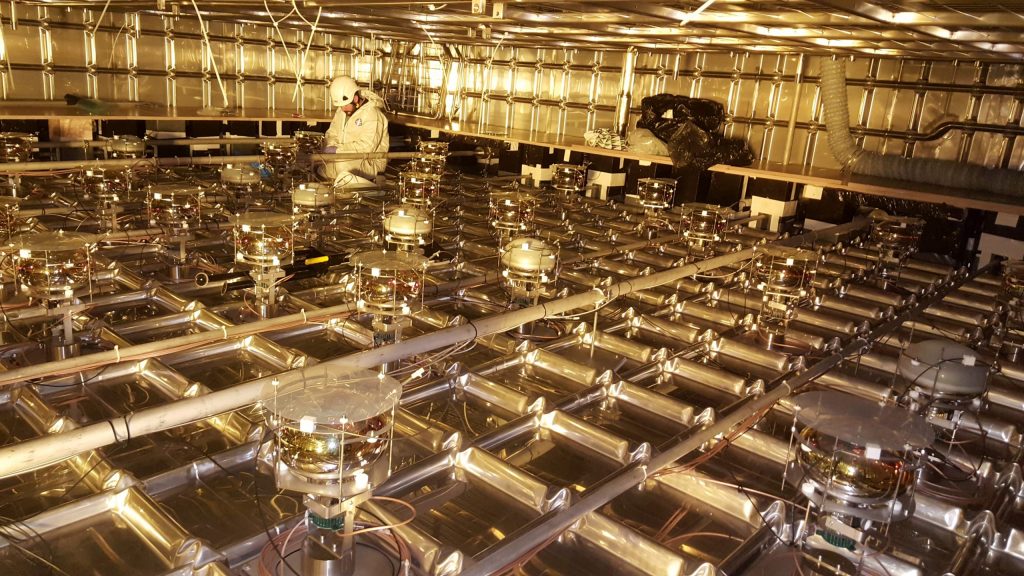
A CIEMAT technician installs the photon detection system in one of the ProtoDUNE detectors. Photo: Enrique Calvo, CIEMAT
Currently, Spain is developing a photon detection system for DUNE’s giant particle detector. This is key to identifying and recreating a particle interaction. The system will allow scientists to understand when an interaction took place inside the detector and to determine the energy of that interaction. Knowing this information helps scientists narrow down when and where the neutrinos came from — a supernova for instance. The system is currently being tested in one of the aptly named ProtoDUNE detectors at CERN. Scientists from Spain are also working on controls and instrumentation for the DUNE detector that let researchers adjust voltages and monitor temperatures, for example.
Well before DUNE was even an idea, Spain was participating in research at Fermilab — most notably with the CDF collaboration, which, along with the DZero collaboration, discovered the top quark in 1995 using the Tevatron particle collider. During this era, Spanish institutions contributed the expertise they gained at CERN in collider physics to Fermilab experiments. One link between the Tevatron era and the current DUNE era was scientist Mario Martinez of the Spanish Institute for High Energy Physics in Barcelona. A leader in the CDF experiment, he also previously served as a representative for Spain in the early days of LBNF/DUNE.
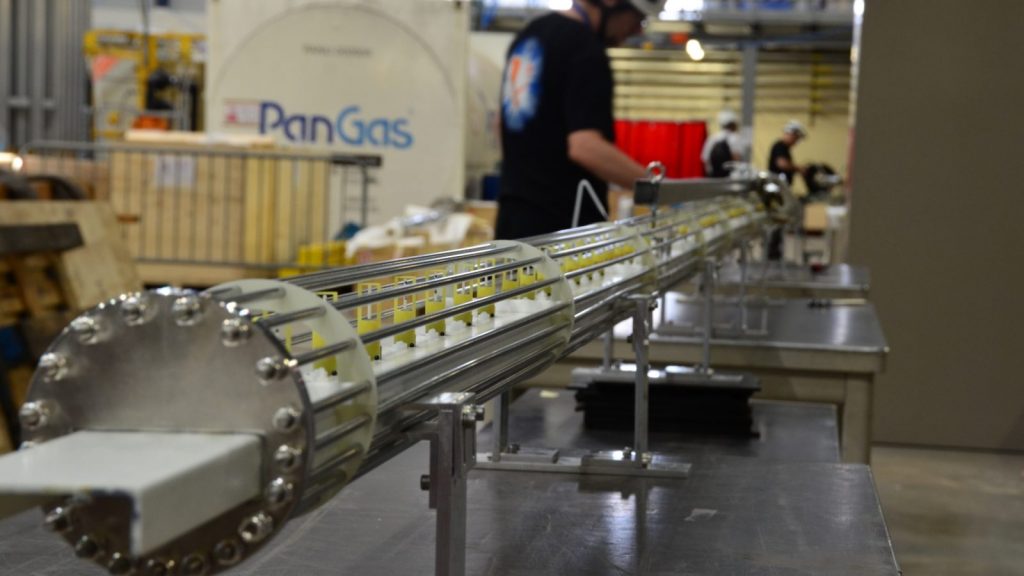
Collaborators at the Institute of Corpuscular Physics in Valencia, Spain, constructed this 25-foot thermometer for one of the ProtoDUNE detectors at CERN. Photo: CERN
Today, more than 60 scientists at 15 Spanish institutions contribute their expertise to more than a dozen experiments at Fermilab. In addition to their research at the Large Hadron Collider, Spanish scientists bring knowledge about neutrino physics, liquid-argon cryostats, computing, cosmology and more to the Fermilab research program. CIEMAT and the University of Granada, for example, are helping build the Short-Baseline Near Detector, which is part of Fermilab’s Short-Baseline Neutrino Program and relies on the liquid-argon detector technology that is also used by DUNE.
Neutrinos have three “flavors,” or types: muon, electron and tau. The SBN program will measure how the neutrinos’ flavors change as they go through the three detectors, which allows scientists to look for the existence of a fourth type of neutrino. The Short-Baseline Near Detector, the SBN detector closest to the neutrino production point, will record over a million neutrino interactions per year, providing scientists with an enormous treasure trove of data for analysis.
Spain is contributing to the simulation side of the photon detection system of SBND. The two institutions hope to expand their involvement when the SBN program begins taking data.
“We are open to help with what they need,” said Gil-Botella. “Physics is the goal, and I think the world has a lot to gain.”
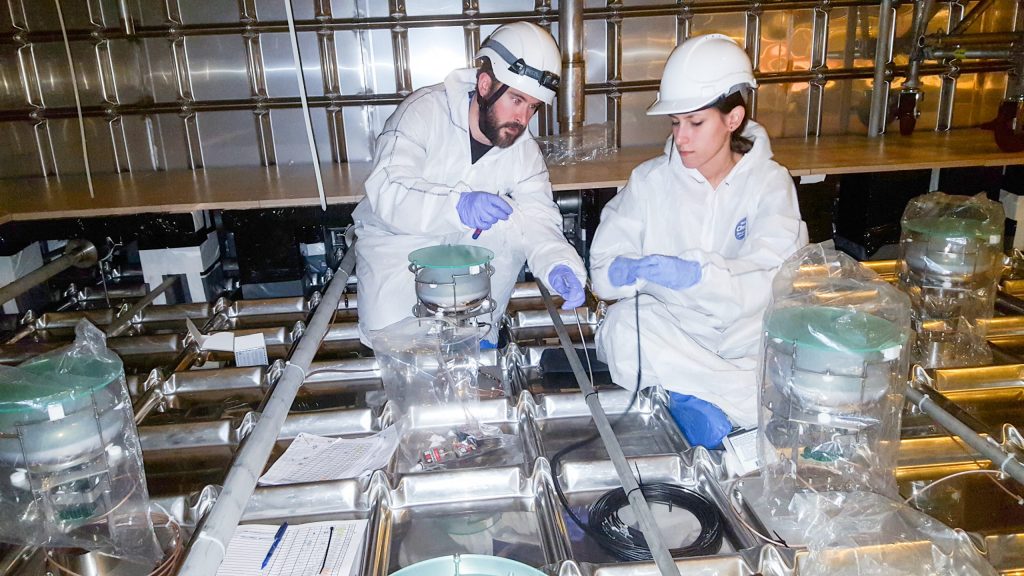
CIEMAT collaborators mount the fibers of one of a ProtoDUNE light calibration system. Photo: Enrique Calvo, CIEMAT
Spain also collaborates with Fermilab on theoretical physics. Scientists are searching for ways experiments like DUNE can go beyond the Standard Model of physics, the framework that describes nature’s fundamental forces and particles at the subatomic scale. Scientists from the Institute of Corpuscular Physics (IFIC) in Valencia, the Autonomous University of Madrid (UAM) and the Institute for High Energy Physics in Barcelona are frequent collaborators with Fermilab’s theoretical physics group. Fermilab has also established formal staff and student exchange programs with both IFIC and UAM and plans to establish a similar program with the University of Barcelona. Every year the Fermilab Theoretical Physics Department receives many students, postdocs and scientists from Spanish institutions who come to Fermilab for several weeks to perform their theoretical work and interact with Fermilab theorists and experimentalists.
“If you are a neutrino physicist, Fermilab is the laboratory of reference,” said Michel Sorel, a scientist at IFIC who has been involved in Fermilab neutrino experiments for the past 20 years. “It is the neutrino capital of the world.”
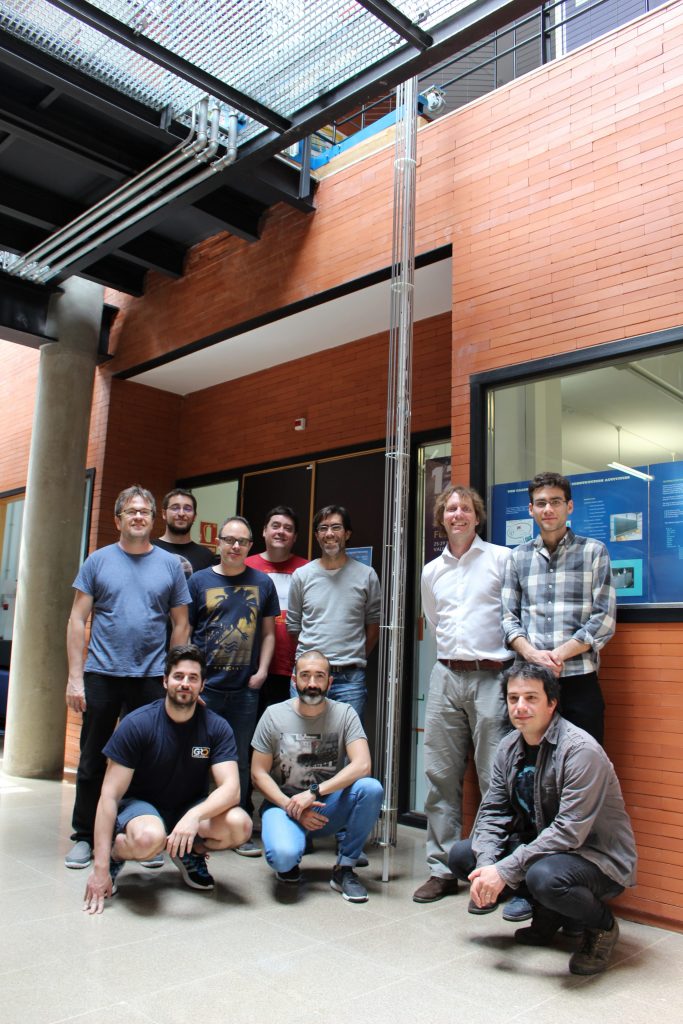
DUNE collaborators from the Institute for Corpuscular Physics gather near one of the ProtoDUNE detectors prior to its installation at CERN. Photo: IFIC
Groups at the Institute of Space Sciences, the Institute for High Energy Physics and CIEMAT also participate in the Fermilab-hosted Dark Energy Survey, which completed its sixth and final year of data-taking earlier this year. This survey is an international collaboration that mapped a 5,000-square-degree area of the sky, recording information from 300 million galaxies.
The contributions go both ways. For example, Fermilab scientists are working on NEXT, the Neutrino Experiment with a Xenon TPC. Located at the Canfranc Underground Laboratory in Spain, NEXT seeks to determine whether or not neutrinos are their own antiparticles.
“We are collaborating on a day-to-day basis,” Sorel said. “It is a very close relationship both for the institutions and the individual scientists.”
For more information on Spain’s contributions at Fermilab, look at some of the previously published articles.



